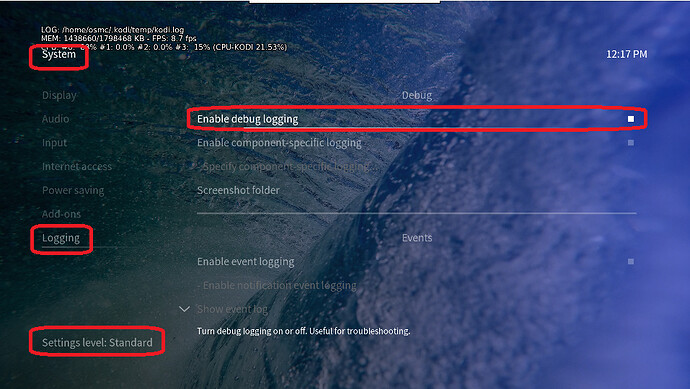Thanks. I need to update my comment about the symptoms.
I had been using a test pattern PNG image when I did those further tests showing the blacks remaining washed out with the various sources/displays no matter the setting of “Use limited colour range”. However, it seems I should have been using a video source, because I can now report:
Setup:
Vero => Denon AVR1713 amp => splitter => TV
MP4 video with high aspect ratio 2.76:1 resulting in letterbox steps top and bottom.
Force RGB output: OFF for both tests below. (I noted your point about reboot needed.)
Use limited colour range: OFF
Result: True black in content, washed-out black on letterbox bars
Log: https://paste.osmc.tv/figewanivi
Use limited colour range: ON
Result: Washed-out black in letterbox bars AND content
Log: https://paste.osmc.tv/tiharutaho
The command line hack you suggested:
echo fullnow | sudo tee /sys/class/amhdmitx/amhdmitx0/attr
did not have any effect, and the “Use limited colour range” continued to have the results described above.
Now, I don’t know the effect of passing the signal through an AVR and splitter, but I naturally tend to think “What about testing with the Vero directly connected to the TV?”
Well, I tried this, and after powering on the Vero, I get the blue splash screen on the TV, followed by blackness forever.
Also, if I type kodi at the command prompt, I again get blackness forever.
I have idea what is going on but maybe that is a clue?
(I got myself able to see the above-mentioned command prompt by starting with Vero => amp => splitter => TV so I have a picture, switching to the CLI, then plugging Vero directly into TV.)
About the projector…
Yes, HD6K (not -M).
It has DVI input and I’m using an HDMI to DVI adaptor plug (passive).
The manual shows the specs for the DVI-I input, and says signal types it supports are:
- RGB (Analog or Digital
- YPbPr (Analog)
- YCbCr (Digital)
I did some tests with the projector.
Same result… Letterbox bars washed out even with full range (limited: OFF) as shown below.
Setup:
Vero => Denon AVR1713 amp => splitter => Christie HD6K projector (DVI input)
MP4 video with high aspect ratio 2.76:1 resulting in letterbox steps top and bottom.
Force RGB output: OFF for both tests below.
Use limited colour range: OFF
Result: True black in content, washed-out black on letterbox bars
Log: https://paste.osmc.tv/ziqetuqoca
Use limited colour range: ON
Result: Washed-out black in letterbox bars AND content
Log: https://paste.osmc.tv/nenuzuhisa
So at the moment, with Use limited colour range: OFF, I can get good blacks in the video content, but the letterbox bars are washed out. And so are the blacks in images (at least the PNG I tested with known 0,0,0 black).
The issue is seen on both the ordinary Teac TV and the projector.
I note also that the command line interface has a washed-out black for the background, in case this is a clue.
Is there anything I can do about the washed-out blacks in letterbox bars of videos… and in still images?
I see there are some other discussions about this:
Black bande are grey
Grey bars when watching video that doesn’t match screen size
Richard

 . The problem is fixed in the new version of OSMC we about to roll out but I’ll see if there’s a hack you can use in the meantime.
. The problem is fixed in the new version of OSMC we about to roll out but I’ll see if there’s a hack you can use in the meantime.